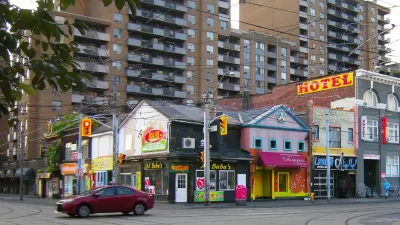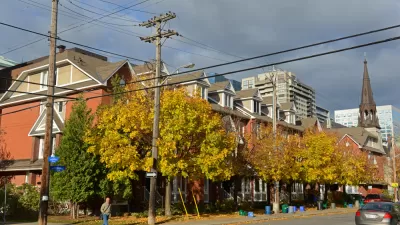The first study to make an attempt at quantifying the value of "eyes on street"—an idea most eloquently described by Jane Jacobs—offers reason to support a mix of uses, with businesses operating later in the evening.

"In June, a team of researchers released a paper, titled 'Analysis of Urban Vibrancy and Safety in Philadelphia,' that attempts to begin a quantitative analysis of Jacobsian theory by bringing together publicly available data sets related to crime, business activity and the built environment," according to an article by Jared Brey.
Three statisticians from the Wharton School at the University of Pennsylvania conducted the study, investigation "the correlations between public safety and population density, population count, zoning, business activity, and business hours."
Brey details the study's methodology and summarizes its findings. One conclusion to draw from the study: that busineses should be allowed to operate at longer hours. According to Shane Jensen, a statistics professor at Wharton, the findings are tentative but should still give planners and city officials reasons to think about the effect of businesses in a neighborhood.
FULL STORY: Philly Streets Get Test of Jane Jacobs’ “Eyes on the Street” Effect

Planetizen Federal Action Tracker
A weekly monitor of how Trump’s orders and actions are impacting planners and planning in America.

Congressman Proposes Bill to Rename DC Metro “Trump Train”
The Make Autorail Great Again Act would withhold federal funding to the system until the Washington Metropolitan Area Transit Authority (WMATA), rebrands as the Washington Metropolitan Authority for Greater Access (WMAGA).

The Simple Legislative Tool Transforming Vacant Downtowns
In California, Michigan and Georgia, an easy win is bringing dollars — and delight — back to city centers.

Albuquerque’s Microtransit: A Planner’s Answer to Food Access Gaps
New microtransit vans in Albuquerque aim to close food access gaps by linking low-income areas to grocery stores, cutting travel times by 30 percent and offering planners a scalable model for equity-focused transit.

This City Will Pay You to Meet Your Neighbors
A North Kansas City grant program offers up to $400 for residents to throw neighborhood block parties.

Commentary: Our Silence Will Not Protect Us
Keeping our heads down and our language inoffensive is not the right response to the times we’re in. Solidarity and courage is.
Urban Design for Planners 1: Software Tools
This six-course series explores essential urban design concepts using open source software and equips planners with the tools they need to participate fully in the urban design process.
Planning for Universal Design
Learn the tools for implementing Universal Design in planning regulations.
Smith Gee Studio
City of Charlotte
City of Camden Redevelopment Agency
City of Astoria
Transportation Research & Education Center (TREC) at Portland State University
US High Speed Rail Association
City of Camden Redevelopment Agency
Municipality of Princeton (NJ)




























